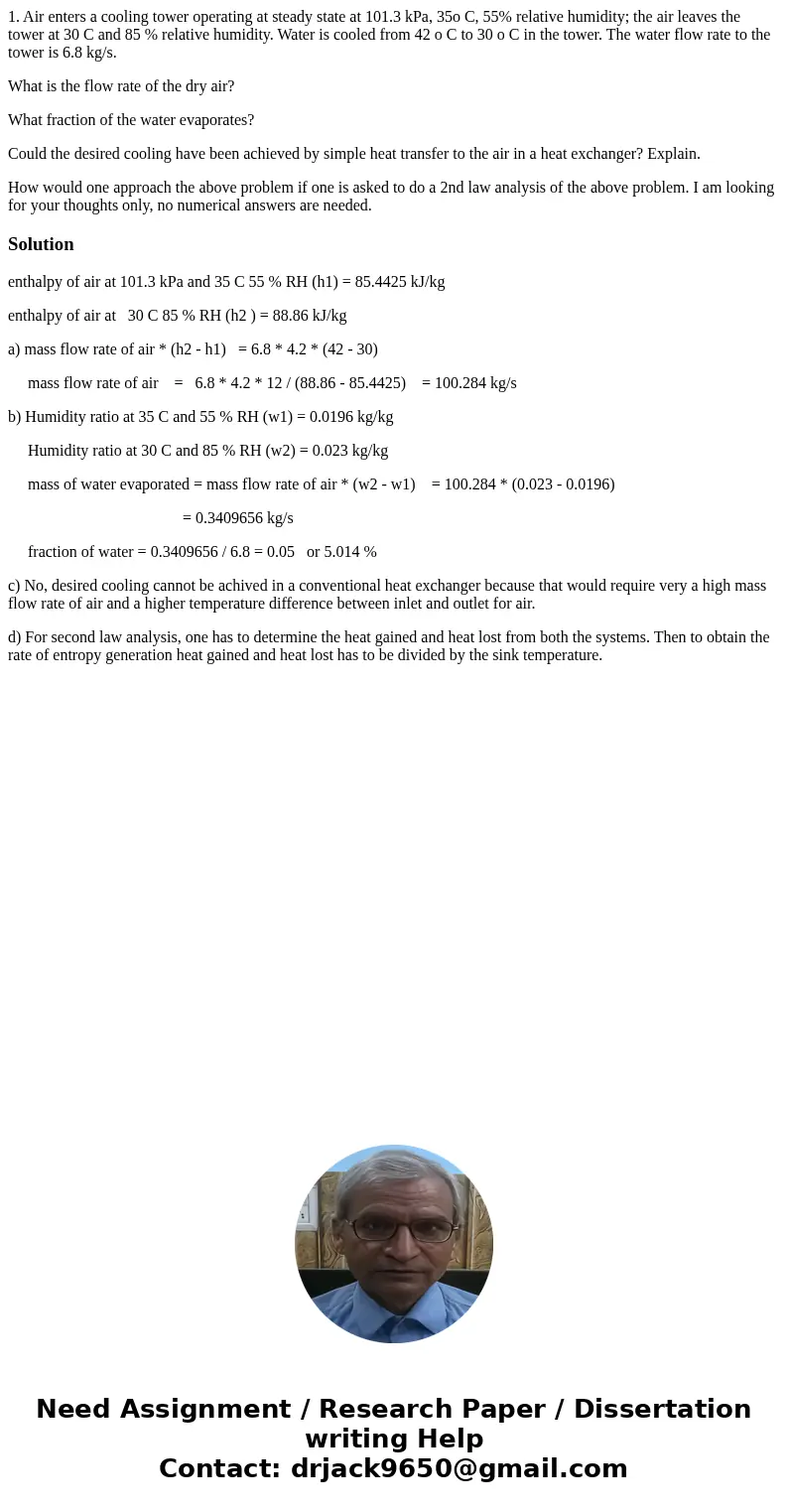1 Air enters a cooling tower operating at steady state at 10
1. Air enters a cooling tower operating at steady state at 101.3 kPa, 35o C, 55% relative humidity; the air leaves the tower at 30 C and 85 % relative humidity. Water is cooled from 42 o C to 30 o C in the tower. The water flow rate to the tower is 6.8 kg/s.
What is the flow rate of the dry air?
What fraction of the water evaporates?
Could the desired cooling have been achieved by simple heat transfer to the air in a heat exchanger? Explain.
How would one approach the above problem if one is asked to do a 2nd law analysis of the above problem. I am looking for your thoughts only, no numerical answers are needed.
Solution
enthalpy of air at 101.3 kPa and 35 C 55 % RH (h1) = 85.4425 kJ/kg
enthalpy of air at 30 C 85 % RH (h2 ) = 88.86 kJ/kg
a) mass flow rate of air * (h2 - h1) = 6.8 * 4.2 * (42 - 30)
mass flow rate of air = 6.8 * 4.2 * 12 / (88.86 - 85.4425) = 100.284 kg/s
b) Humidity ratio at 35 C and 55 % RH (w1) = 0.0196 kg/kg
Humidity ratio at 30 C and 85 % RH (w2) = 0.023 kg/kg
mass of water evaporated = mass flow rate of air * (w2 - w1) = 100.284 * (0.023 - 0.0196)
= 0.3409656 kg/s
fraction of water = 0.3409656 / 6.8 = 0.05 or 5.014 %
c) No, desired cooling cannot be achived in a conventional heat exchanger because that would require very a high mass flow rate of air and a higher temperature difference between inlet and outlet for air.
d) For second law analysis, one has to determine the heat gained and heat lost from both the systems. Then to obtain the rate of entropy generation heat gained and heat lost has to be divided by the sink temperature.

 Homework Sourse
Homework Sourse